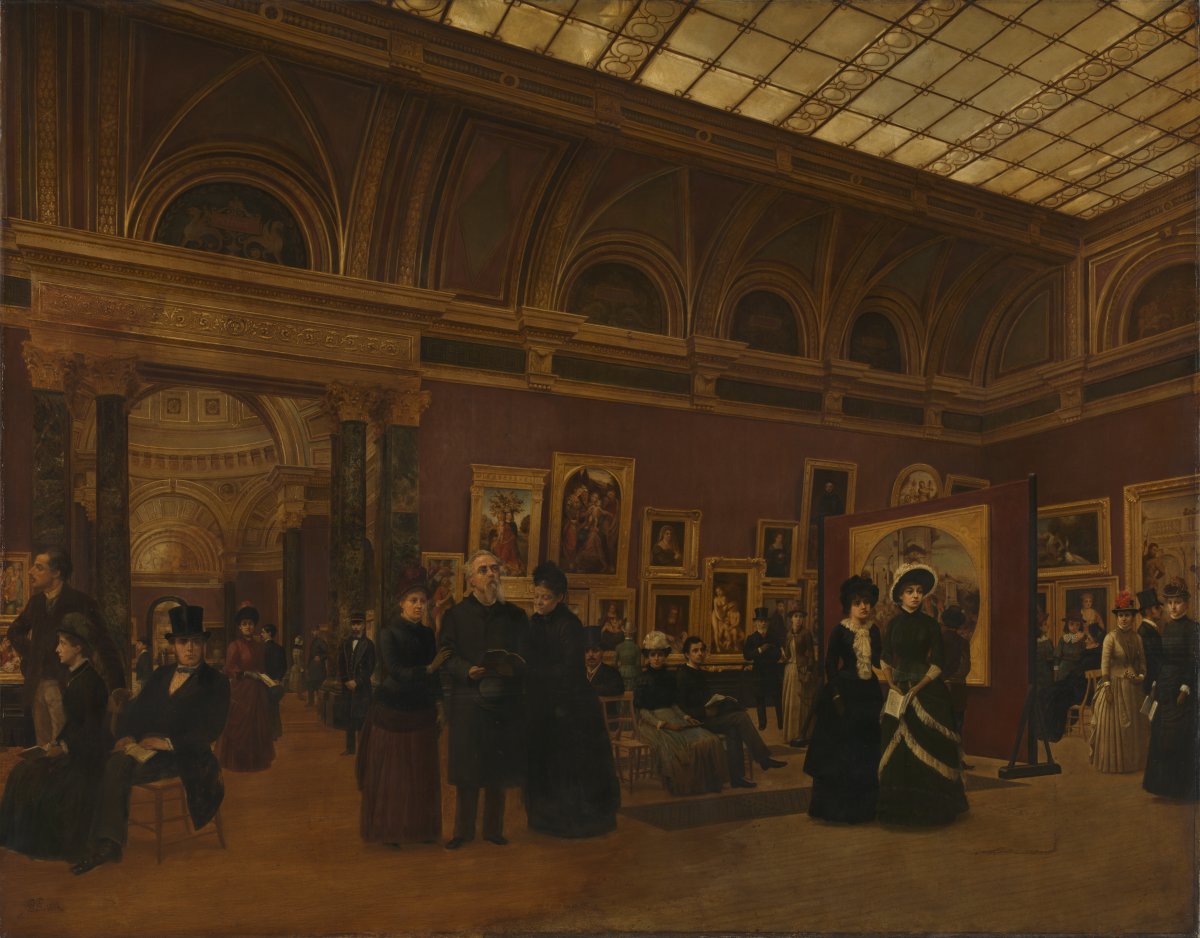This painting is a rare depiction of the interior of the National Gallery in the 1880s. It shows the North Room of the E. M. Barry block, opened to the public in 1876. This block was intended to have a palatial quality, resembling the great museums of Italy and Germany. The entrance between the North Room and the Dome, shown open here, has since been blocked up to allow the display of Guido Reni’s Nativity. The paintings are placed as far as possible by school, with the Venetian paintings hung together. ‘Skying’ of paintings is avoided; by and large the works are placed as near as possible to eye level, leaving the upper part of the wall blank. The screen in the centre of the room - a device introduced early in the Gallery’s history - provides further space for showing pictures. There is no artificial light to enhance the natural light through the glazed roof. A rail (common in galleries from around 1860) protects the paintings, but visitors are allowed plain seating. They are shown studying the paintings with the assistance of opera glasses and catalogues. Admired at the time of opening, the Barry Rooms fell out of fashion in the twentieth century. The Director Sir Philip Hendy (1900-80) wrote in 1960 that the Barry extension although ‘erudite in its combination of classical features from a variety of periods and splendid in its use of marble and gold... defies modern tastes for more intimate and neutral settings’. In the 1980s however the renewed taste for magnificence in art museums led to the re-creation of the original decorative schemes for the rooms.
